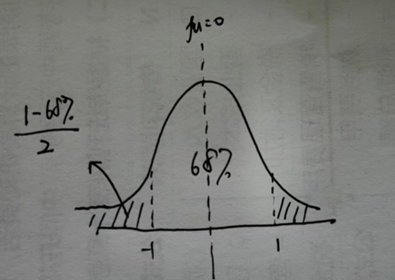请问『(1–0.68)/2 = 0.16』 这一步是什么意思? 既然结果是单尾,那应该是 1- 0.68/2 才对吧?
A random variable X follows a normal distribution with a mean of 1.0 and a standard deviation of 1.0. The probability that X is greater than zero is closest to:
- 0.50.
- 0.68.
- 0.84.
C is correct because the standardized value corresponding to X = 0 is Z = (0 – 1)/1 = –1. For a standard normal random variable Z "[a]pproximately 68% of all observations fall in the interval μ ± σ [which is –1 to 1]," where μ is the mean, and σ is the standard deviation of Z. Thus, probability that Z is less then –1 (which is – σ = – 1) is (1–0.68)/2 = 0.16. And thus, the probability that Z is greater than –1 is (1 – 0.16) = 0.84.




